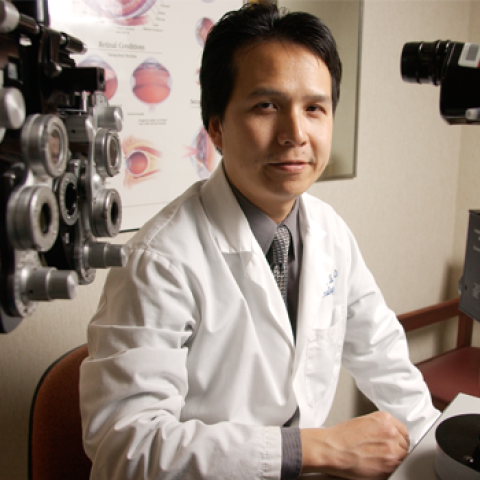Interdisciplinary Initiatives Program Round 2 – 2002
Christopher Ta, Ophthalmology
Curtis Frank, Chemical Engineering
The cornea is the transparent, outermost part of the eye that serves as a refractive element in the visual pathway. It consists of three major cellular layers: a protective epithelium, stroma made mostly of highly organized collagen, and an endothelium that serves to maintain water balance and transparency. Disease or damage to these layers can lead to blindness that requires a corneal transplant. While human donor transplants are the standard treatment for corneal blindness, the complications and limitations inherent in them have prompted development of synthetic corneal substitutes. An artificial cornea, or keratoprosthesis (Kpro), has great potential to benefit millions worldwide who are blind due to corneal disease. Although Kpros have been available for many years in various forms, the fabrication of synthetic stromal equivalents with the transparency, biomechanics, and regenerative capacity of human donor corneas remain a formidable challenge.
In our collaboration with the Dept. of Chem. Eng., Prof. Curtis Frank and his students have developed novel double networks hydrogels with great potential for replacing corneal stroma.



